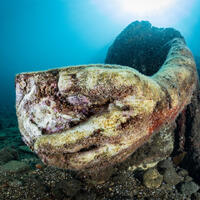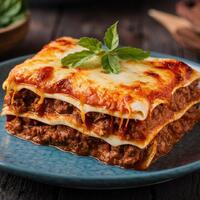Pecorino Romano was produced around Rome, particularly in the regions of Lazio, Sardinia and Tuscany.
Pecorino Romano is made from sheep's milk, which must come from specific areas to meet the strict criteria of the Protected Designation of Origin (PDO). The production process involves several steps: the fresh sheep's milk is heated and rennet is added, which causes the milk to curdle. The curd is cut into smaller pieces and then pressed to remove the whey. The cheese is then salted, which can take several days to weeks. And then comes the ripening process. Pecorino Romano is matured for at least five months, but often longer. The production of Pecorino Romano is strictly regulated to preserve its traditional quality and taste.
Pecorino Romano is known for its hard, crumbly texture and sharp, salty taste. It is white to pale yellow in colour and may have a fine rind on the surface. The flavour of Pecorino Romano is intense, spicy and slightly salty, making it an ideal accompaniment to many dishes.

Pecorino Romano is a versatile cheese that is used in many traditional Italian recipes. Its pungent flavour is perfect for pasta, risottos, salads and soups. One of the most famous dishes where Pecorino Romano plays a key role is Cacio e Pepe, a simple but tasty dish of pasta, cheese and pepper. It is also often used as an ingredient in pesto, where it is combined with basil, pine nuts, garlic and olive oil.
Pecorino Romano is rich in protein, calcium and vitamins A and B12. Due to its distinctive taste, it is often used in small quantities.







